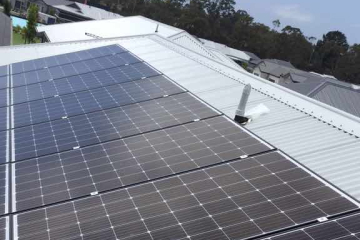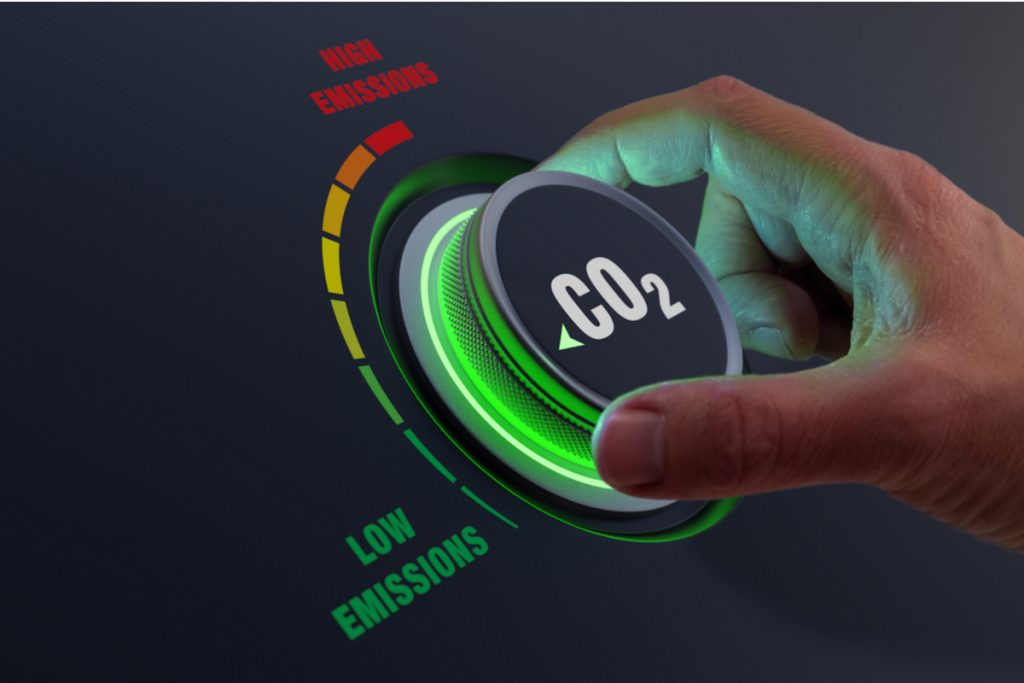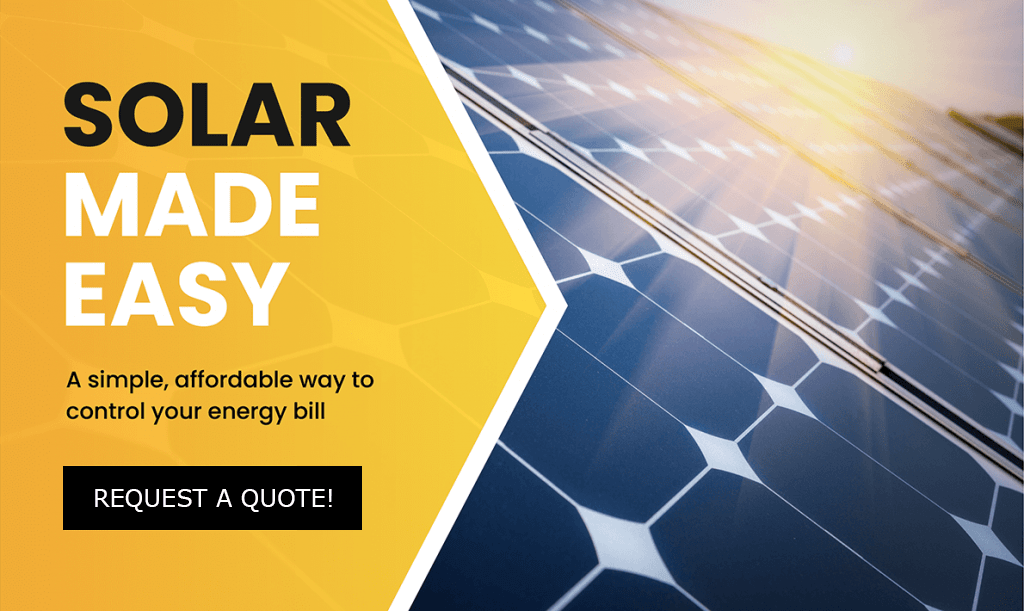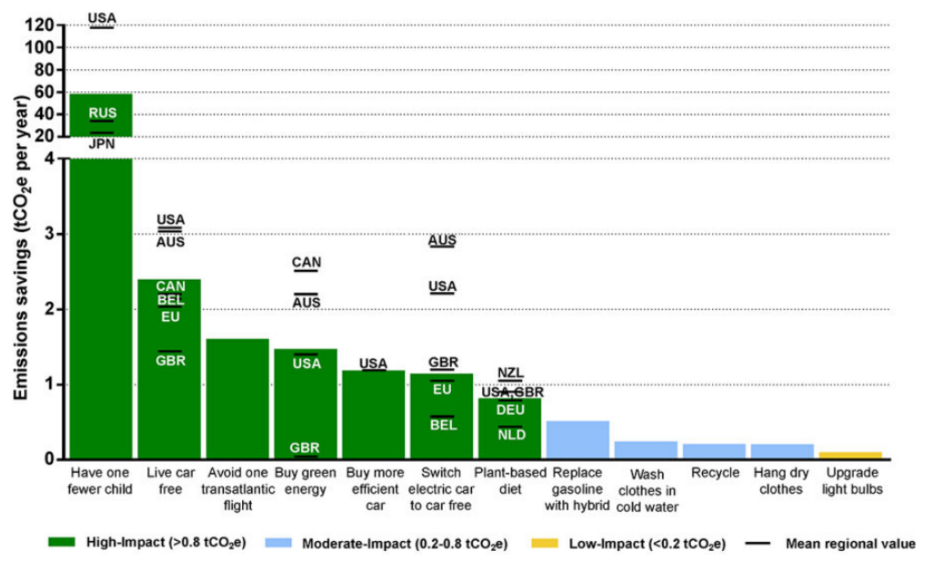
The term net zero is bandied around a lot at the moment. What does it mean?
“Going net zero means removing as many emissions as we produce”, according to Friends of the Earth.
In other words, our homes reach net zero when every tonne of CO2 emissions produced is cancelled out through energy efficiency improvements and use of renewable energy sources like solar power.
And with now being a great time to go solar, there are some great deals around to make it simpler and more affordable for you to get solar installed.
Australian homes produce a lot of CO2 emissions – 20 tonnes a year, on average. This can very from 3 to 30 tonnes depending on which state you live, your lifestyle, how energy efficient your home is and the sources of energy used to power it.
Australia is one of the highest per person emitters of CO2 in the world.
Reducing our CO2 emissions to 2.5 tonnes per person – or 10 tonnes for a 4-person household – is what we must do to limit global warming to 1.5 degrees Celsius, according to the UN Environment’s latest Emission Gap Report.
The message is clear. Aussie homes need to cut household emissions by at least 50 per cent.
If we can go further – and reach net zero emissions for our homes – that’s even better.

To answer this question, the starting point is to take a close look at where we get the power to run our homes
Across Australia, the statistic is that two-thirds of the energy we use in our homes is electricity from the national grid and one-third is directly from fossil fuels, in particular natural gas.
Three-quarters of the electricity across the Australian electricity grid is from non-renewable sources, predominantly coal. The varies state-by-state with Tasmania and South Australia doing much better with grids that are 50 per cent plus renewable.
But this is changing, with Australia’s energy market operator setting ambitious targets for the nation’s electricity grid to handle 100 per cent renewable energy by 2025.
Natural gas is inherently a dirty source of power – and that won’t change.
Put the two together and you can see why it makes sense – for anyone who’s keen to cut their carbon footprint – to start making the transition to an all-electric home.
It also makes sense to generate your own clean energy with solar. It’s one of the fastest ways to get your home to net zero.
Installing a decent size solar power system can get you quickly on the path to net zero carbon emissions.
The average Australian home uses 20 kilowatt hours of electricity a day. This would justify a solar power system of around 6.6kW in size.
But 6.6kW is unlikely to be sufficient if you are serious about decarbonizing your home, your private transport – and making your home all-electric.
With an electric vehicle requiring around 2kW of solar panels, not to mention the addition of battery storage which would also contribute to your net zero goal, you can see that 6.6kW is most probably not going to be large enough if you’ve got an eye to the future.
Install a 10kW solar power system and you’re generating around 40 kilowatt hours of clean solar energy. Over a year, this is a reduction of around 17 tonnes of CO2 emissions.
Going back to our stat that the average Aussie home produces 20 tonnes of CO2 a year, you can see that by installing 10kW of solar panels, you are already almost at net zero.

Getting a decent size solar power system installed is a great starting point for making your home more energy efficient and cutting both your CO2 emissions and energy bills.
It provides you with a firm basis to make your home all-electric, providing enough solar energy to power your heating and cooling, heat your water and run your appliances.
But the big issue is that solar panels only work in the daytime.
That’s where home battery storage comes in.
With solar battery storage, you can store the surplus energy your solar produces during the daytime and use it at night. By doing this, you are using clean energy to run your household systems during the night, rather than dirty grid electricity or gas.
Battery storage systems like Powerwall, Sonnen and LG battery have the capacity to power a large family home through the night using your own clean solar energy.
Not only does that mean you are a lot more independent from the grid, it also takes you much closer towards a net zero home.

Image credit and data from – www.particle.scitech.org.au/people/reducing-your-carbon-footprint/
Heating and cooling as well as hot water are the two biggest users of energy in your home. Making these more energy efficient and switching them to all-electric is vital if you want to reach zero net emissions.
Heating and cooling is the biggest use of energy in most Australian homes – at 40 per cent of total home energy consumption on average. So what’s the best all-electric heating and cooling solution for your home?
An electric reverse-cycle split system is the most energy efficient, lowest cost heating and cooling option that generates the lowest greenhouse gases, according to Sustainability Victoria. Power it with your solar system and the CO2 emissions savings – and bill savings – are even greater.
The next big item to tackle is your hot water system which accounts for around 25 per cent of energy used in the average Australian home. There are Government incentives in place to help reduce the cost of moving solar hot water and the bill savings are typically around $140-$400 a year.
A hot-water heat pump can be the cheapest way of heating your water and one of the most efficient. For every one unit of energy used to heat your water, you get four units of heated water – that’s 400 per cent efficiency. Compare this with a gas-fired hot water service that is only around 75 per cent efficient.
Hot water heat pumps collect free renewable heat from the air outside your home and therefore quality for the Federal Government form of rebate – the so-called STCs (Small-scale Technology Certificates). This further reduces the cost of installation.
Home automation, energy monitoring as well as bi-directional chargers for electric vehicles are some of the new technologies that will improve energy use in your home and cut your carbon emissions.
At Solar Run, we pride ourselves on keeping abreast of new developments that help our customers make their homes run smarter, minimizing both your carbon footprint and energy bills.
We’re on the cusp of exciting new developments that have the potential to significantly improve the comfort and efficiency of powering our homes and cars. Solar and battery storage will be central to how this works. Getting the right advice now is critical if you want to take advantage of what’s coming – and at the same time making your home net zero.
We are available! Have a question? Text us here.
 Text Us
Text Us
Youre so cool! I dont suppose Ive learn something like this before. So good to search out somebody with some original ideas on this subject. realy thank you for beginning this up. this web site is something that’s needed on the web, someone with a bit originality. useful job for bringing something new to the web!
I will immediately grab your rss feed as I can not find your e-mail subscription link or newsletter service. Do you’ve any? Kindly let me recognize in order that I may subscribe. Thanks.
Have you ever considered about adding a little bit more than just your articles? I mean, what you say is fundamental and everything. However just imagine if you added some great visuals or video clips to give your posts more, “pop”! Your content is excellent but with pics and clips, this website could undeniably be one of the most beneficial in its niche. Good blog!